In May, the American Alpine Club received a gift of nearly 5,000 books and relics from an anonymous donor. We toured the Colorado facility to see a few standout pieces from the museum’s approximately 60,000 artifacts and books.
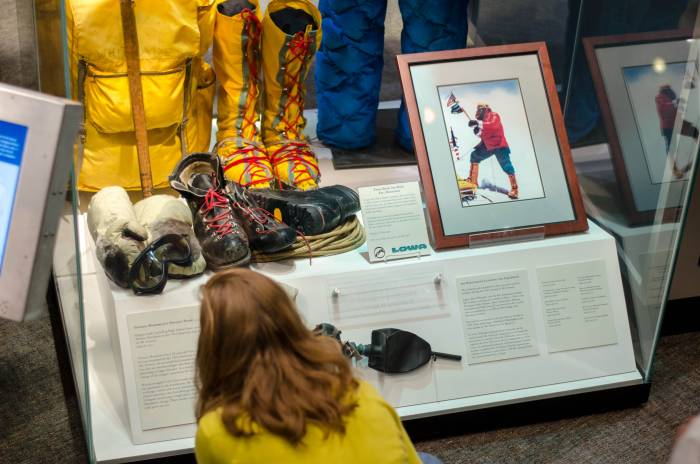
An adventurer and bibliophile’s nirvana, the aisles at the Henry S. Hall Jr. American Alpine Club Library are chock-full of rare books related to mountain travel. They fill the bottom level of the American Mountaineering Center in Golden, Colorado.
Mesmerized, and daydreaming about the volumes that I would use to map out my next Himalayan trek, I toured the climber’s athenaeum in May with the AAC Library Manager Katie Sauter, a human encyclopedia for an overwhelming number of artifacts (see my 10 favorite items below). Close to 20,000 circulating works are permitted to leave the grounds in the hands of AAC members, but a treasure trove of documents exists that are only browsable under the library’s oversight, the special collections.
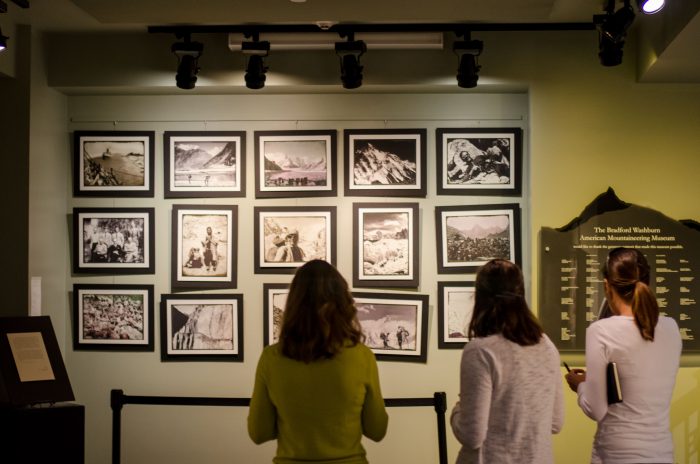
We entered the Rare Books Room: a locked, temperature-regulated enclave that steadily holds 66 degrees Fahrenheit to preserve nearly 5,500 antique books and film. Half of the controlled assortment is comprised of the John M. Boyle Himalayan Collection—2,500 books on climbing in the Himalayas in 36 different languages, and autographed first-ascent books from each of the 14 8,000-meter peaks.
Mass Donation Arrives
A day earlier, the AAC had received the first parcels of one enormous gift, from a donor (that wishes to remain anonymous): 5,000 volumes to be added to the special collections, which will be stowed in the Central Asia Library, the neighboring and much larger non-ambiance controlled storage room. The shipment will also include artifacts, of which an exact count is still to be determined.
The benefaction bumps the total number of books in the special collections up to 40,000.
“We have the largest and best collection of mountaineering books in the world. Our Central Asia Library has the most comprehensive collection on the culture, history and environment of the Tibetan plateau and the Himalaya,” American Alpine Club CEO Phil Powers told me, and added: “The additional ephemera—letters, diaries and photos—make this collection a scholar’s paradise.”
The mysterious aforementioned patron has donated close to 75 percent of the entire special collections—a total of 30,000 rare books—over the course of seven years. The most recent contribution subsumes the final pieces of the individual’s private collection, American Alpine Club Content Manager Whitney Bradberry told me.
AAC Turns 100
A seeming coincidence, the donation aligns perfectly with the year of the Library’s 100th birthday.
And the library’s tens of thousands of items in circulation are similarly gawk-worthy. There are rows of guidebooks, instructional how-to and photography compilations, mountaineering narratives, maps, and climbing films. The AAC even mails checkouts to its members all over the country.
Countless storage rooms have shelves stuffed with boxes of artifacts and documents from wilderness icons—like Jim Whittaker’s expedition outfit from the first American Ascent of Everest, which would have been stored in the Artifacts Storage Room next to countless ice axes and mountaineering shoes, but was on display in the Bradford Washburn American Mountaineering Museum, adjacent to the Library. Not to mention the Library’s first editions, such as Thoreau’s In the Maine Woods and A Tramp Abroad, by Twain. Another room—where photographs are not permitted—encloses 175 poster-size prints of black-and-white Bradford Washburn photographs, captured mostly in Alaska, hang. To ensure the preservation and value, only one photograph is allowed to be on display at a time, for one-month increments, while the others are stowed in darkness.
To say that the value of the collection is staggering is an understatement. Here are 10 of my favorite antiquities from the visit.
1. Peter Schoening’s Ice Axe
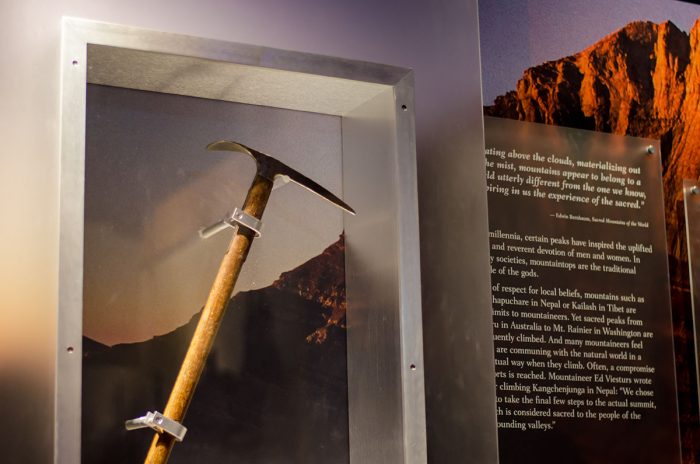
The ice axe of Peter Schoening, nicknamed “the belay,” is one of the most famous pieces of equipment in mountaineering history. Schoening used it to save the lives of five men during the 1953 American expedition attempt of the world’s second-highest peak, K2. When the team was above 25,000 feet, a climber became ill. During the desperate, storm-ridden descent, one man slipped, which pulled the five men flying down the mountain. Quick to react, Schoening jammed the ice axe next to a boulder, rescuing the entire group.
2. Brad Washburn’s Camera
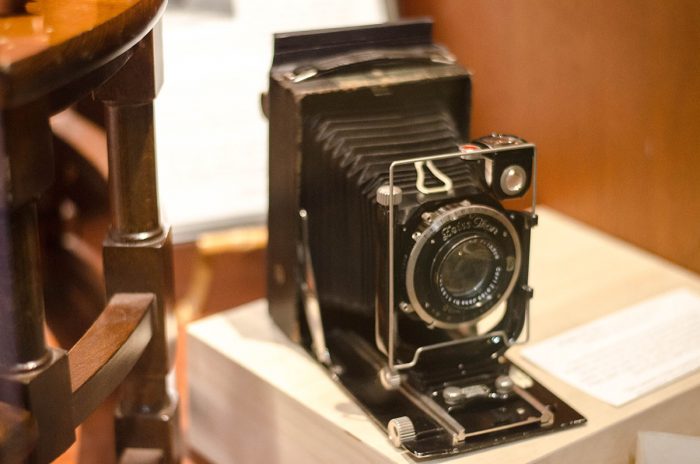
Sponsored by National Geographic, photographer and explorer Brad Washburn’s camera, a 1929 Zeiss Maximar B 4 x 5, has captured countless adventures. In 2008, the camera took photos on its final expedition to outer space with astronaut and climber John Grunsfeld.
3. Horse’s Snow Shoe
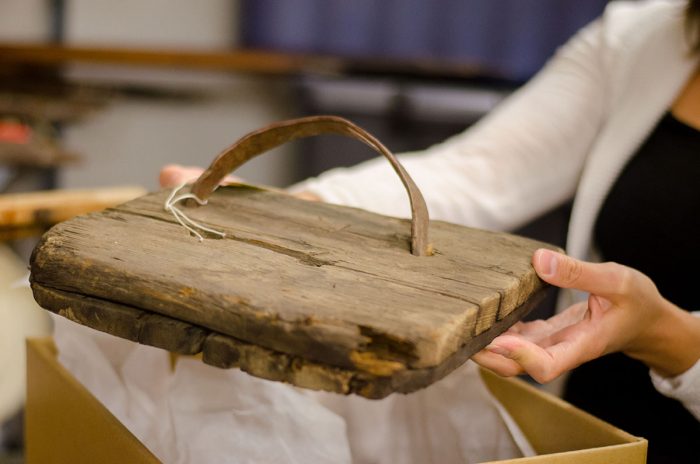
In 1937, Robert Bates and Bradford Washburn made a first ascent of the highest unclimbed mountain in North America: Mount Lucania, in Canada’s Yukon Territory. Bates brought this back from the Yukon: a horse’s wooden snowshoe, which he thought was from the Klondike Gold Rush, dating back to 1898. (Bates was also one of the men saved by Peter Schoening’s ice axe.)
4. Climber’s Shoes
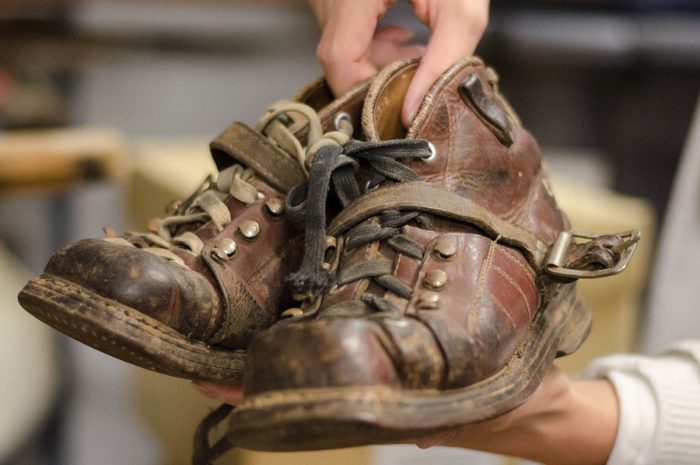
Of the countless pairs of climbers’ shoes in the Artifacts Storage Room, this set is the 10th Mountain Division boots of Raffi Bedayn, who designed gear with Patagonia’s founder, Yvon Chouinard.
5. Lantern
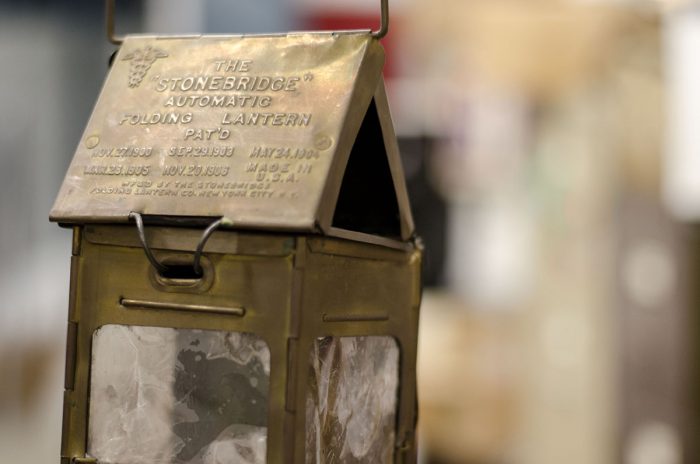
This old lantern was that of Albert Ellingwood. He made the first summit of Lizard Head, in Southwest Colorado; the first traverse of Ellingwood Ridge on La Plata Peak; and was the third person to climb all of Colorado’s 14,000-foot peaks.
6. John Boyle Himalayan Library
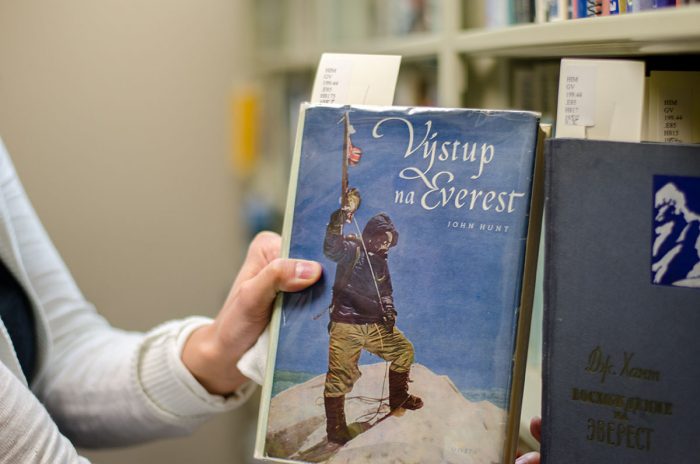
John Boyle went on a Himalayan expedition in the 1980s and thereafter began to collect what would become the American Alpine Club’s John M. Boyle Himalayan Library: 2,500 books on climbing in the Himalayas, in 36 different languages, and autographed books from each of the 14 8000-meter peaks’ first ascents. Here: This copy of, Vystup na Everest, by John Hunt, is in Czechoslovakian.
7. Lantern Slides
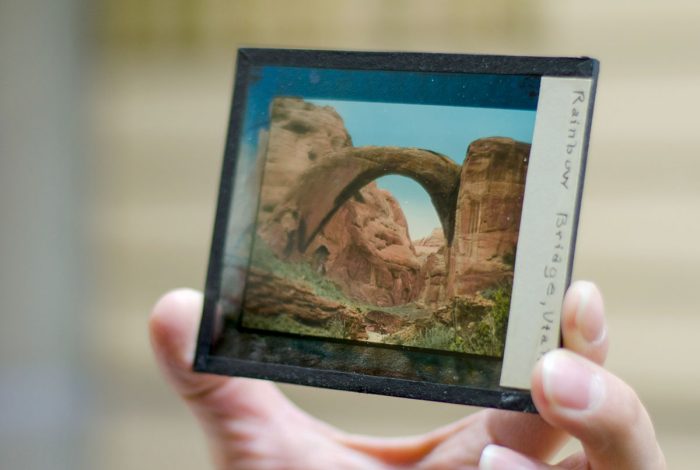
Stored in the Rare Books Room, more than 5,000 Lantern Slides—images on glass that are then hand-painted—date between 1890 and 1940.
8. Snow Goggles
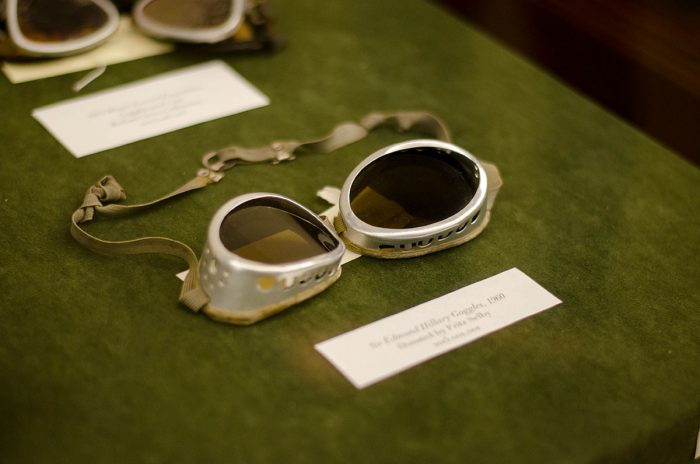
Sir Edmund Hillary’s Goggles, from 1960, which Fritz Selby donated to the AAC.
9. Oxygen Mask
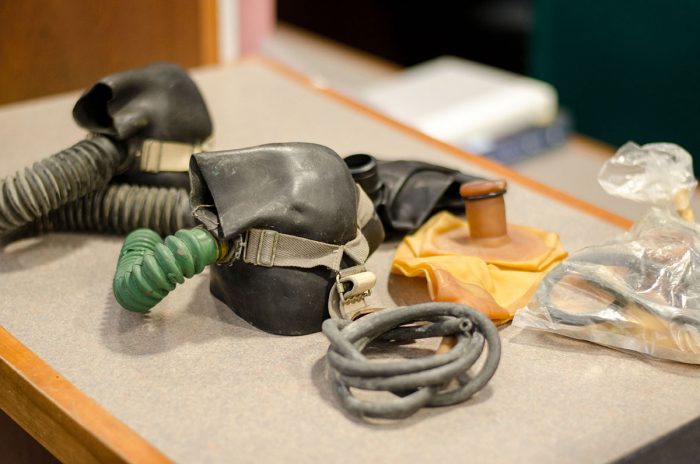
This was one of the earliest oxygen mask prototypes and was worn by legendary climber and anesthesiologist Thomas Hornbein—he also created the mask himself—in 1963, during his first ascent of the West Ridge of Everest. Since then, the route has only been repeated a handful of times.
10. John Muir Letter
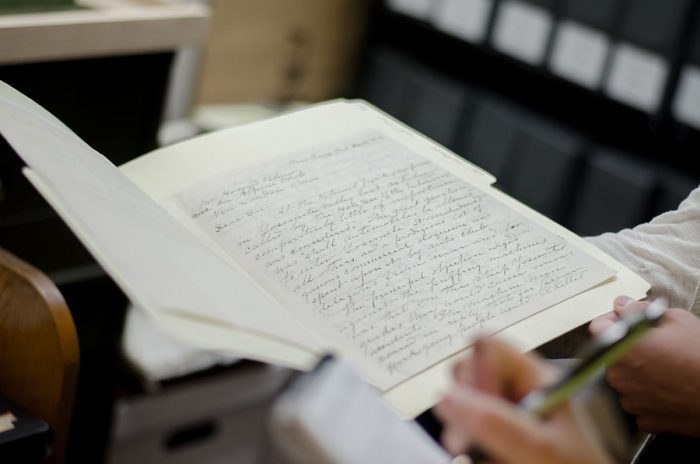
The second president of the American Alpine Club, John Muir wrote this letter to then AAC Secretary Howard Palmer, summarizing a National Parks conference debating whether or not automobiles should be allowed to enter Yosemite. Muir calls them “puffing machines” and wrote, “All signs indicate automobile victory, and doubtless, under certain precautionary restrictions, these useful, progressive, blunt-noted mechanical beetles will hereafter be allowed to puff their way into all of the parks and mingle their gas-breath with the breath of the pines and waterfalls, and, from the mountaineer’s standpoint, with but little harm or good…good walkers can go anywhere in the these hospitable mountains without artificial ways. But most visitors have to be rolled on wheels with blankets and kitchen arrangements.”
Stop by to research your next climbing trip, or schedule a personal tour with Katie Suater, ksauter@americanalpineclub.org, or call 303-384-0112.
